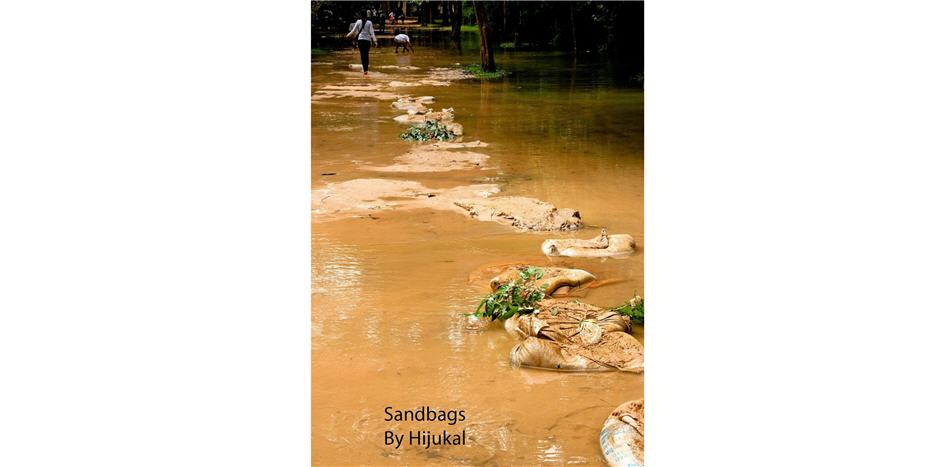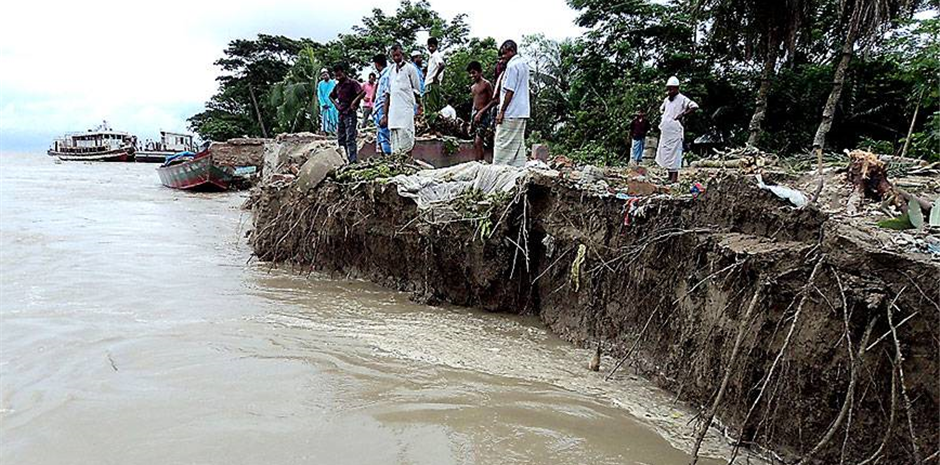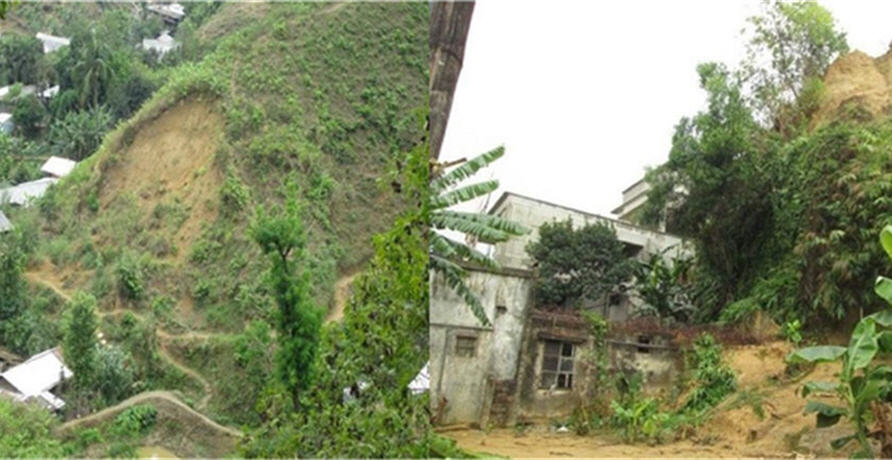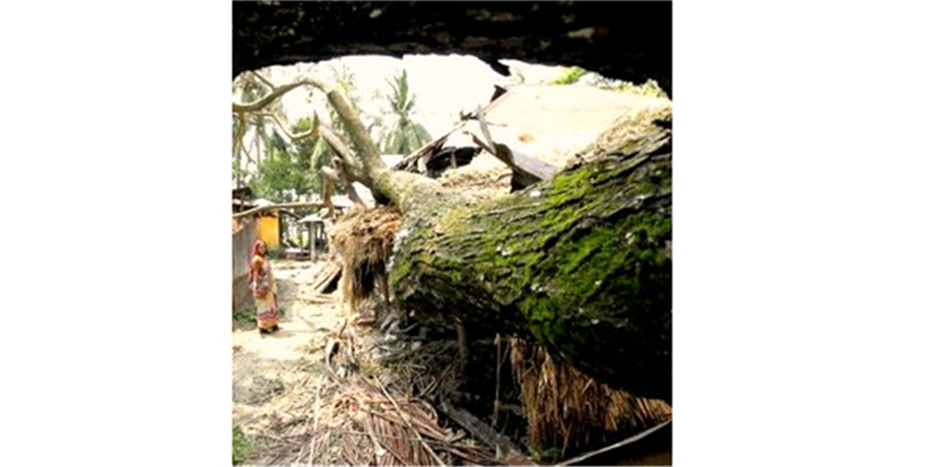Flooding in Siem Reap
Chittagong, Bangladesh
There are four main natural disasters that keep Cambodia in poverty due to Cambodian economic damages such as drought, epidemic, storm and flood. Among those four causes, flood is dragging Siem Reap province economically and socially for almost every year both in the countryside and in the city. Are those local residences aware of flooding in their community?
Siem Reap province is bordered with Tonle Sap Lake which is one of main body sources of water for the whole nation. In every flooding season, the water level would rise to a stage that would be very harmful for people and the society. In Siem Reap countryside, most citizens faced severe flooding damages; their rice paddies, crops, animals, properties, livelihood, clean water and infrastructure were destroyed.
For those local residences who could not survive with the severe flooding, they were evacuated to the high ground with the support from the government. Ongoing raining causes flooding throughout most parts of Cambodia, especially Siem Reap Province.
In 2011, there was a big flood in Cambodia where everything was under water. Diseases were spreading from one person to another because most of the people did not have proper water to drink and contaminated water could spread germs from one place to another easily. Roads were overwhelmed with water, so students could not go to school; consequently, schools had to close for a while. Due to the experience with flooding, people are more aware of flooding.
Digging up the ground for high hills is an effective way for their preparation because their animals, personal properties could be stored there when there was flooding.
Flood brought hard wind that could be very harsh for people to survive. Dry food and rice could prevent them from hunger for some periods of time. During the planting season, farmers usually plant more food than usual.
Countryside people are aware of flooding, knowing when is the flooding season, and they know some ways to protect themselves out of the destruction. In addition, each member in the community would spread out the news on when would flood come and every houses have their own radio to listen to every news on weather patterns.
These are the ways that they are still holding in their minds for their safety in the next flooding season.
On the other hand, not only countryside citizens in this area faced those challenges, most city citizens also met various difficulties. They could not get food and supplies because some local businesses could not travel to sell vegetable, meat rice or other miscellaneous things.
The high level of water on the roads brings difficulties for traffic jams; and it also causes town citizens to breath in bad smell from the disposed wastes on the ground and the manure from toiletry system that been leaking out. These brought both city and countryside citizens of Siem Reap in health risks.
According to International Federation of Red Cross and Red Crescent Societies reported on the flood situation of Cambodia in 2011 that, there were 12 districts of Siem Reap and 66 communes were affected by flooding. Furthermore 17, 787 families and 17,787 houses were affected, and 13 houses were damaged.
And there were 5, 338 people were evacuated to high ground and safe places such as schools, pagodas and hospitals.
To answer the question of how preparedness did the countryside and city citizens of Siem Reap, let’s elaborate the word, “preparednessâ€Â. Preparedness has the connotation of readiness and awareness. Be aware on what will happen and ready to fight and face those upcoming events. As Siem Reap province got affected by flood almost every year, both city and countryside citizens are more than aware of flooding.
People in Siem Reap Countryside were prepared by building their houses on the high ground, filling up the barns with more rice, and making dried food. They were also constructed dam to block the water pathways, reestablished high roads within their villages and buy new boats.
In addition, city citizens filled all food they needed in the refrigerator and clean water in their water storage. They also stored first aid just in case to prevent themselves from any possible diseases of flooding.
According to Rithea Leng, a woman who lived in Siem Reap town, mentioned that, her family did not raised enough preparedness for flooding in 2011; her family did not have enough food to eat. Consequently, when another big flood came in 2013, her family preserved more food for preventing hunger in her refrigerator.
Her community was really aware of flooding in 2013 because most of them united to create sandbags to block water doorways to prevent water from backing up.
With the awareness in minds, both countryside and city citizens of Siem Reap province generate with various methods to prevent from the loss of their properties and beloved one. Most of the new couples from the countryside are trying to find high ground for building houses to start a completely new and fresh livelihood.
Additionally, they are teaching kids how to swim, and informing them how dangerous water is. Another method is they are trying to cultivate plenty of crops and to harvest early before the Mekong’s Flooding season comes. Then, save those products in the safe places.
More importantly, to raise more awareness of the upcoming flood, most countryside citizens are starting to afford new TVs and Radio with the clear connection Frequency. They follow news and meteorological channels, just in case if there are some announcements about unpredictable storms that could create flooding. Thus, they could evacuate on time.
Despite of those ways of prevention, citizens in the city have another several ways to add on those. Some of them are trying to buy first kits for large amounts and learning how to use those survival kits properly. Rather than that, they are storing plenty of clean water in their water storage because they know in advance that flooding brings all possible germs to anybody sources of water, especially undergrounded water.
In conclusion, between city and countryside people of Siem Reap, its city citizens are more knowledgeable and aware than its countryside citizens.
The Cambodian government or Red Cross and Red Crescent Societies should save the countryside citizens first, rather than do anything else.








